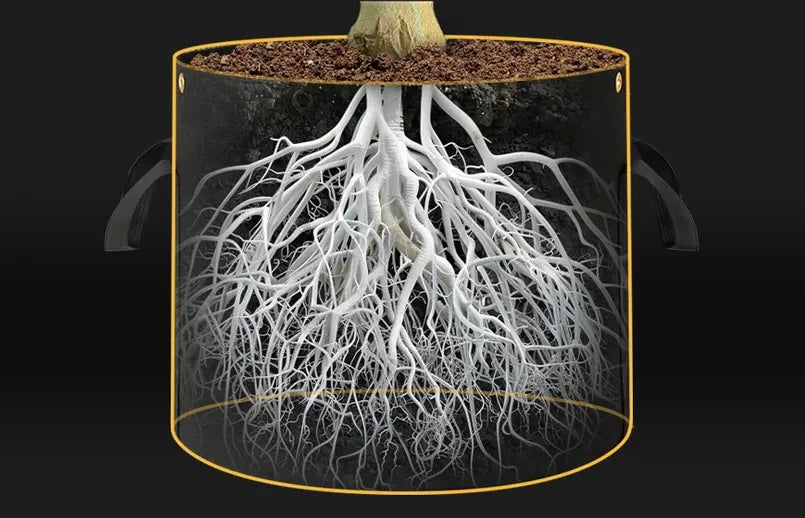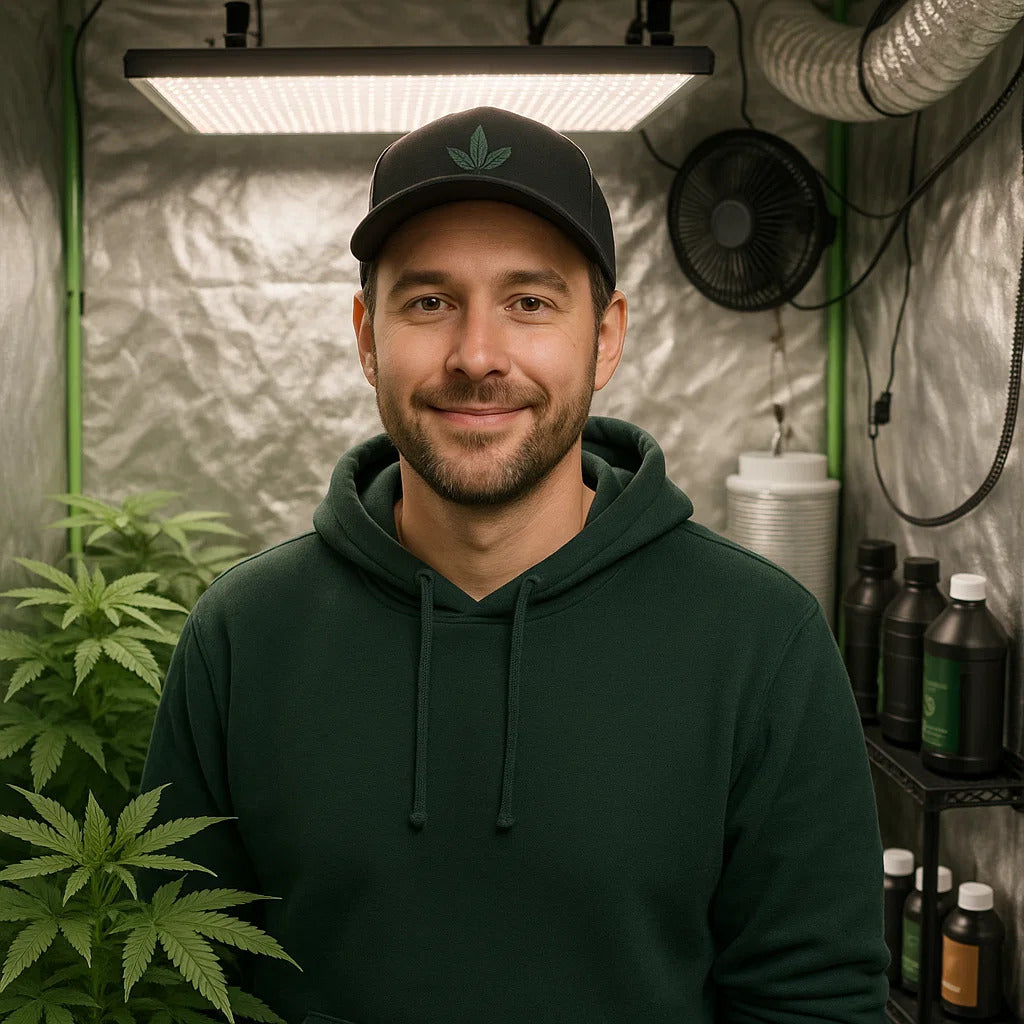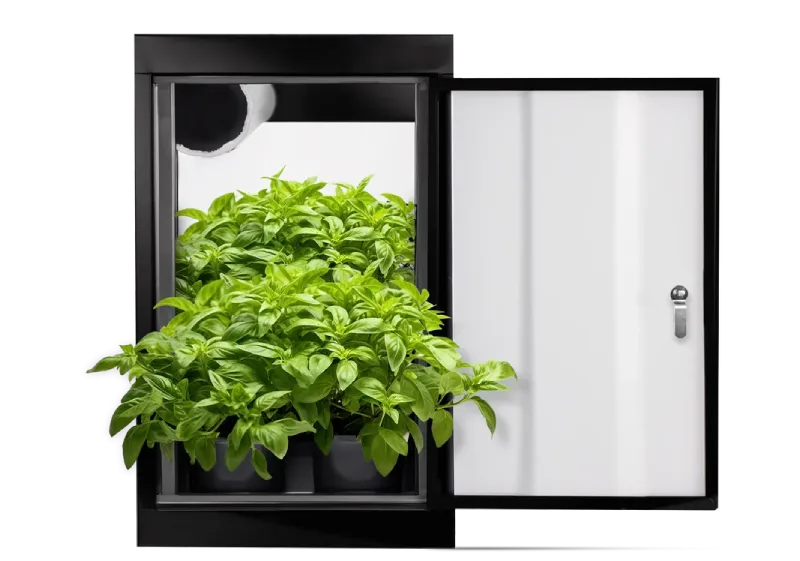
Grow Plants in Bags: Flexible and Space-Saving Gardening
Growing Plants in Bags for Thriving Green Spaces
Gardening has evolved significantly over the years, embracing innovative techniques and materials to make plant cultivation more accessible and efficient. One such innovation is growing plants in bags, a method that has gained popularity among urban gardeners, hobbyists, and even professional horticulturists. Growing plants in bags offers numerous advantages, including improved root health, better drainage, and flexibility in garden design. This comprehensive guide will explore the benefits of this gardening method, how to get started, best practices, and tips for achieving flourishing plant growth.

The Rise of Bag Gardening
Bag gardening, also known as container gardening or grow bag gardening, involves using fabric or plastic bags as containers for growing plants. This method has become increasingly popular due to its versatility and practicality, especially in urban environments where space is limited. The concept is simple yet effective: a portable, flexible container that can be filled with soil and planted with a variety of crops.
Benefits of Growing Plants in Bags
1. Enhanced Root Health
One of the most significant advantages of growing plants in bags is the promotion of healthy root systems. Traditional containers often lead to root circling, where roots grow around the inside of the pot, becoming tangled and restricted. In contrast, the breathable fabric of grow bags allows for air pruning. When roots reach the edge of the bag and encounter air, they stop growing outward and instead develop more fibrous and branched root systems. This results in stronger, healthier plants with improved nutrient and water uptake.
2. Superior Drainage and Aeration
Grow bags are designed to provide excellent drainage and aeration, which are crucial for healthy plant growth. The porous fabric material allows excess water to escape, preventing waterlogging and reducing the risk of root rot. Additionally, the increased airflow to the roots promotes better oxygenation, which is essential for root respiration and overall plant health.
3. Flexibility and Portability
Grow bags offer unmatched flexibility and portability compared to traditional pots. They are lightweight and easy to move, making it simple to reposition plants to optimize sunlight exposure or protect them from adverse weather conditions. This portability is particularly beneficial for urban gardeners with limited space, allowing them to create versatile and dynamic garden setups on balconies, rooftops, or patios.
4. Space Efficiency
For gardeners with limited space, grow bags provide an efficient solution. They can be placed in tight spaces, stacked vertically, or arranged creatively to maximize the use of available area. This makes grow bags ideal for urban gardening, where every inch of space counts. Additionally, grow bags can be used to create a temporary garden that can be easily dismantled and moved if needed.
5. Eco-Friendly Option
Many grow bags are made from recycled or biodegradable materials, making them an environmentally friendly choice. Unlike plastic pots, which can take hundreds of years to decompose, fabric grow bags have a smaller environmental footprint. Their durability also means they can be reused for several growing seasons, reducing waste and promoting sustainable gardening practices.
Getting Started with Bag Gardening
Starting a garden using grow bags is straightforward and requires minimal materials. Here’s a step-by-step guide to help you get started:
1. Choose the Right Grow Bags
Grow bags come in various sizes, typically measured in gallons. The size you choose will depend on the types of plants you intend to grow. For example:
- 1-3 gallon bags: Ideal for small herbs, flowers, and seedlings.
- 5-gallon bags: Suitable for medium-sized plants like peppers, tomatoes, and eggplants.
- 10-gallon bags: Perfect for larger plants such as zucchini, small shrubs, and dwarf trees.
Ensure the grow bags you select are made from high-quality, breathable fabric that promotes good drainage and aeration.
2. Select Quality Soil
The soil you use is crucial for the success of your bag garden. Opt for a high-quality potting mix that is well-draining and rich in organic matter. Avoid using garden soil, as it can compact and hinder root growth. Consider adding perlite or vermiculite to the mix to improve drainage and aeration further.
3. Prepare the Bags
Before filling the grow bags with soil, make sure they are placed in their intended location, as they can become heavy and difficult to move once filled. Fill the bags with the prepared soil mix, leaving about an inch of space from the top to allow for watering.
4. Plant Your Seeds or Seedlings
Follow the planting instructions for the specific crops you are growing. Ensure proper spacing between plants to allow for adequate air circulation and growth. Plant seeds or seedlings at the appropriate depth, as indicated on the seed packet or plant label.
5. Water and Fertilize
Water the plants thoroughly after planting, ensuring the soil is evenly moist but not waterlogged. The fabric material will help prevent overwatering by allowing excess moisture to escape. Depending on the type of plants, you may need to fertilize periodically. Use a balanced liquid fertilizer or a plant-specific fertilizer to provide essential nutrients throughout the growing season.
Best Practices for Successful Bag Gardening
To maximize the benefits of growing plants in bags, follow these best practices:
1. Optimize Sunlight Exposure
Most plants require at least 6-8 hours of direct sunlight per day. Position your grow bags in a location that receives ample sunlight. If growing indoors, consider using grow lights to supplement natural light.
2. Monitor Soil Moisture
Check the moisture level of the soil regularly. Grow bags tend to dry out faster than traditional pots, so they may require more frequent watering. However, be careful not to overwater, as the fabric will naturally drain excess water.
3. Provide Support for Tall Plants
For taller plants or those that tend to sprawl, such as tomatoes, cucumbers, and beans, provide stakes, cages, or trellises to support their growth. This will help keep the plants upright and prevent damage to the stems and fruits.
4. Prune and Trim Regularly
Regular pruning and trimming can help maintain plant health and encourage more robust growth. Remove dead or diseased leaves, and pinch back growing tips to promote bushier growth and increased fruit production.
5. Rotate Crops
To prevent nutrient depletion and reduce the risk of pests and diseases, practice crop rotation. Change the type of plants grown in each grow bag every season. For example, if you grew tomatoes in a bag this season, consider planting herbs or flowers in the same bag next season.
6. Mulch
Adding a layer of mulch on top of the soil in your grow bag can help retain moisture, regulate soil temperature, and suppress weeds. Organic mulches, such as straw or wood chips, are ideal for this purpose.
Best Plants to Grow in Bags
Many plants thrive in grow bags. Here are some of the best options:
Vegetables
- Tomatoes: Both determinate and indeterminate varieties do well in grow bags. Ensure they receive adequate sunlight and provide support with stakes or cages.
- Peppers: Bell peppers, chili peppers, and other varieties benefit from the excellent drainage and aeration of grow bags.
- Eggplants: These plants grow well in grow bags, producing healthy and abundant crops with proper care.
- Lettuce and Spinach: These leafy greens are easy to grow and can be harvested multiple times throughout the season.
Herbs
- Basil: Basil thrives in grow bags, especially when provided with consistent watering and full sunlight.
- Parsley: Both flat-leaf and curly parsley grow well in grow bags, providing a steady supply of fresh herbs.
- Mint: Mint can quickly become invasive in the ground, but a grow bag contains its spread while allowing it to thrive.
- Cilantro: Cilantro prefers cooler weather and can be easily managed in a grow bag to prevent bolting.
Flowers
- Marigolds: Marigolds are easy to grow and add vibrant color to your garden. They also help repel pests.
- Petunias: These flowering plants do well in containers and provide continuous blooms throughout the growing season.
- Geraniums: Geraniums thrive in the well-draining environment of grow bags and add a splash of color to any garden.
Small Fruit Trees
- Strawberries: Strawberries are well-suited for grow bags, producing sweet and juicy fruits.
- Dwarf Lemon Trees: Dwarf varieties of lemon trees can thrive in grow bags, especially if moved indoors during colder months.
Overcoming Common Challenges
While growing plants in bags is relatively straightforward, gardeners may encounter some challenges. Here are solutions to common issues:
1. Bag Deterioration
Over time, fabric grow bags can wear out due to exposure to sunlight and weather conditions. To extend their lifespan, consider using a UV-resistant grow bag or placing them in a shaded area. Additionally, store bags indoors during the off-season to protect them from the elements.
2. Pests and Diseases
Just like traditional gardens, grow bags can attract pests and diseases. Monitor your plants regularly and take preventive measures, such as using organic pest control methods or companion planting to deter pests. Ensure good air circulation around the plants to reduce the risk of fungal diseases.
3. Nutrient Deficiencies
Grow bags may require more frequent fertilization than traditional gardens, as nutrients can leach out with the water. Use a balanced fertilizer and consider adding compost or organic matter to the soil mix to replenish nutrients.
Conclusion
Growing plants in bags is a versatile, efficient, and eco-friendly gardening method that offers numerous benefits. From improved root health and superior drainage to flexibility and space efficiency, grow bags make it easy for gardeners of all levels to cultivate a wide variety of plants. By selecting the right bags, using high-quality soil, and following best practices for planting and maintenance, you can create a thriving garden in any space. Whether you are an urban gardener with limited space or a seasoned horticulturist looking to try something new, growing plants in bags can transform your gardening experience and lead to bountiful harvests and beautiful blooms. Embrace the flexibility and convenience of grow bag gardening and watch your plants flourish like never before.

Lena Myles
I'm a mushroom enthusiast and home cook based in Oregon. I'm passionate about foraging and creating fungi-focused recipes, especially delicious, plant-based dishes using gourmet mushrooms like trumpet, shiitake, and oyster. When I’m not in the kitchen, you’ll usually find me wandering the woods in search of new wild flavors.


